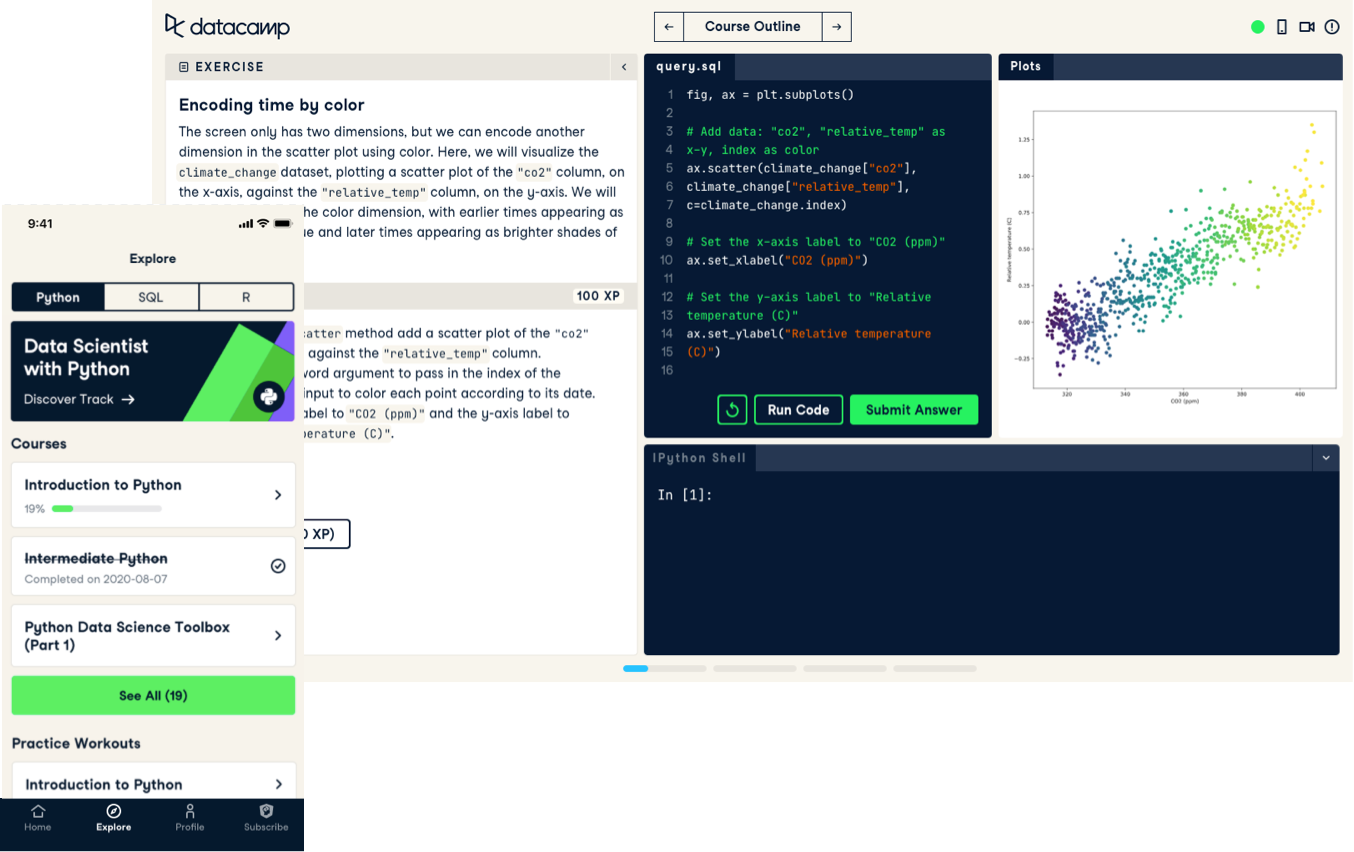Working with Geospatial Data in Python
This course will show you how to integrate spatial data into your Python Data Science workflow.
Follow short videos led by expert instructors and then practice what you’ve learned with interactive exercises in your browser.

This course will show you how to integrate spatial data into your Python Data Science workflow.
Learn to perform the two key tasks in statistical inference: parameter estimation and hypothesis testing.
Learn key object-oriented programming concepts, from basic classes and objects to advanced topics like inheritance and polymorphism.
Use Seaborns sophisticated visualization tools to make beautiful, informative visualizations with ease.
Learn to construct compelling and attractive visualizations that help communicate results efficiently and effectively.
Shiny is an R package that makes it easy to build interactive web apps directly in R, allowing your team to explore your data as dashboards or visualizations.
Learn how to make attractive visualizations of geospatial data in Python using the geopandas package and folium maps.
Learn the theory behind responsibly managing your data for any AI project, from start to finish and beyond.
Learn to tame your raw, messy data stored in a PostgreSQL database to extract accurate insights.
Learn how to build interactive and insight-rich dashboards with Dash and Plotly.
Parse data in any format. Whether its flat files, statistical software, databases, or data right from the web.
Shift to an MLOps mindset, enabling you to train, document, maintain, and scale your machine learning models to their fullest potential.
In this course, youll learn how to collect Twitter data and analyze Twitter text, networks, and geographical origin.
Master time series data manipulation in R, including importing, summarizing and subsetting, with zoo, lubridate and xts.
Use RNA-Seq differential expression analysis to identify genes likely to be important for different diseases or conditions.
Analyze text data in R using the tidy framework.
Learn the core techniques necessary to extract meaningful insights from time series data.
In this course youll learn about basic experimental design, a crucial part of any data analysis.
In this course, students will learn to write queries that are both efficient and easy to read and understand.
Learn powerful command-line skills to download, process, and transform data, including machine learning pipeline.
Visualize seasonality, trends and other patterns in your time series data.
Practice Power BI with our healthcare case study. Analyze data, uncover efficiency insights, and build a dashboard.
Learn to use essential Bioconductor packages for bioinformatics using datasets from viruses, fungi, humans, and plants!
Explore ways to work with date and time data in SQL Server for time series analysis
Learn how to detect fraud using Python.
Learn to build recommendation engines in Python using machine learning techniques.
Explore the concepts and applications of linear models with python and build models to describe, predict, and extract insight from data patterns.
Learn to design and run your own Monte Carlo simulations using Python!
Detect anomalies in your data analysis and expand your Python statistical toolkit in this four-hour course.
Learn how to use spaCy to build advanced natural language understanding systems, using both rule-based and machine learning approaches.